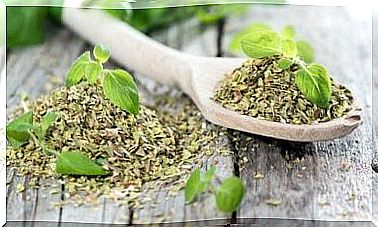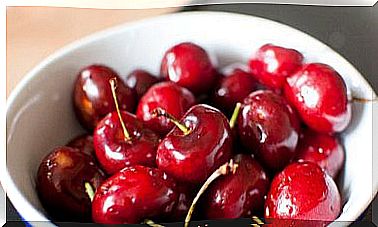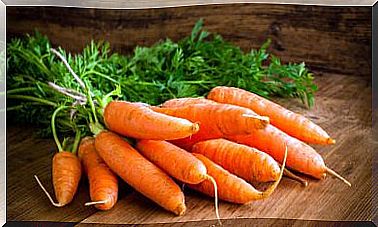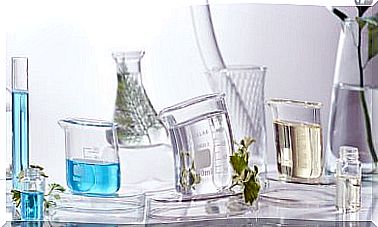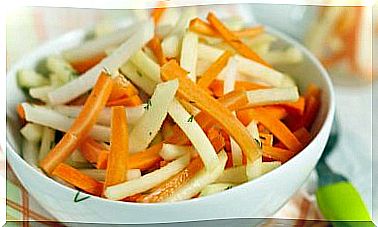The Diet Of Colors
To achieve balance in our body it is recommended to include foods of five colors in our diet. These are purple or blue, red, green, white, and yellow.
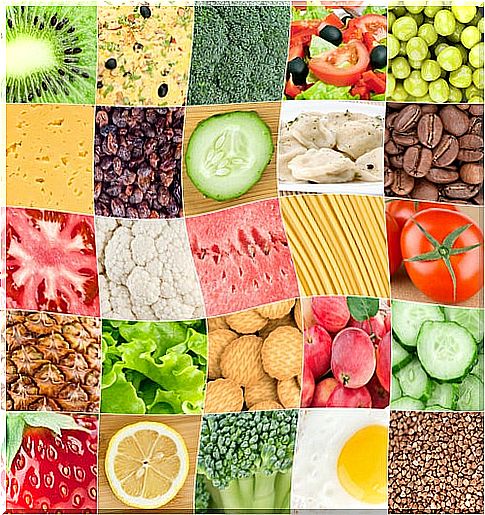
The diet of colors is in fashion, especially in the United States, but what is it about? It is not only a diet to lose weight, in fact it could also be interesting for those who want to improve their diet.
It is based on the balance that should govern any diet that boasts of being balanced. It gives the clues to select those foods that are really beneficial for the body. So, do you want to know the details of this diet that is all the rage in the United States? If so, be sure to read this article.
The diet of colors or “eating with your eyes”
This is a phrase we hear frequently. Applied to the diet of colors, its meaning is very different from what it usually has. In this case, it does not refer to the tendency that we have to serve ourselves more food on the plate than our body needs. It refers to the activation of our senses; especially, smell and sight.
The greater the diversity of colors in the dish, the greater the amount of different nutrients that you will be providing to the body. If you follow this motto, you will get to eat much better, according to the American Heart Association .
If you have a few extra pounds and even if you are a slim person, a simple gesture like this will help you stay healthy. You see it? They are all advantages.
Five must be at least the colors that you have to gather in your weekly menu at least. So try to always have fresh vegetables, fruits and vegetables of various colors on hand. Thus, you will ensure that you provide the body with the least amount of calories while providing the many minerals, fibers and vitamins it needs to function properly.
Recent research and others not so much, have indicated that a diet of these characteristics would reduce the risk of suffering, among others, diabetes, cardiovascular diseases and cancer.
Colors and nature
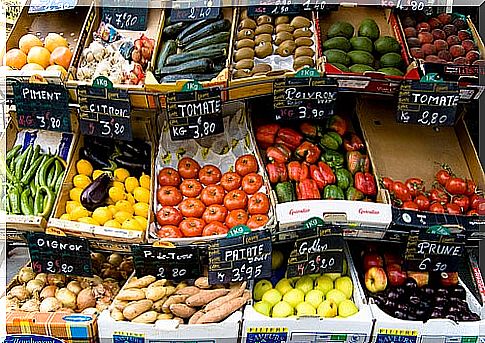
Imagine going to the greengrocer and compare that experience to going to the butcher shop. Probably one of the first things that you represent in your mind has to do with color. Certainly, the diversity of colors of fruits and vegetables contrasts with the scarce color of meat products.
All things considered, colors are signals with which nature captures the attention not only of animals, but ours as well. This could lead us to think that the coloring of fruits and vegetables is an invitation to their consumption. Let us, then, allow ourselves to be led by his wise hand. There is no reason for concern; the care and well-being of our health are guaranteed.
About the colors of this diet
But what are those 5 colors? Well, the most common: purple or blue, red, green, white and, finally, yellow.
- So purple or blue foods often contain high doses of antioxidants that protect cells from free radicals. Thus, they help the circulatory system to function better while preventing various types of degenerative diseases.
- Those of reddish color are foods that provide beta carotenes, specifically lycopenes, necessary to maintain the health of the skin. They would also favor the elimination of waste and toxins that would otherwise accumulate in the body.
- Greens, meanwhile, are foods rich in fiber. Therefore, they would avoid high concentrations of cholesterol in the blood. This is a factor that would therefore favor blood circulation. Thanks to this, we could avoid suffering from the dreaded cardiovascular diseases.
- Whitish foods would strengthen the immune system. They would then contribute to increasing resistance to possible attacks from viruses and bacteria.
- Finally, yellow foods would help keep teeth and bones strong in general. In addition, they would contribute to the health of the eyes and the skin.
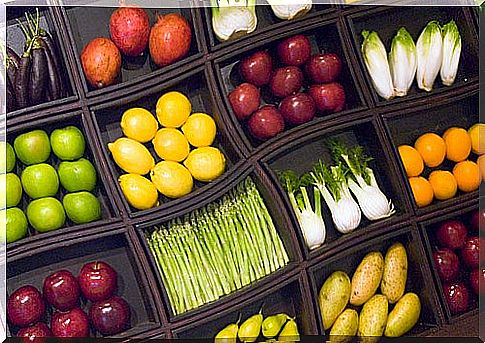
Foods that are part of each group
Here is a representation of the food according to its colors:
- Blue or purple: beets, eggplant, blackberries, black grapes, plum, blueberries, fig, passion fruit
- Red: tomato, apple, strawberries, cherries, watermelon, pomegranate, raspberries, bell pepper, radish
- Green : lettuce, cabbage, zucchini, chard, broccoli, spinach, kiwi, asparagus, green bean, artichoke, peas
- White: garlic, turnip, cauliflower, onion, leek, pear, endive, mushrooms
- Yellow or orange: carrot, orange, grapefruit, lemon, banana, mango, tangerine, pumpkin, peach, peach, medlar, pineapple, apricot
Rules for the color diet
Imagine how many minerals, vitamins and other nutrients the combination of at least one food from each of these 5 groups would provide us daily.
Although it would be desirable, it is not necessary for everyone to come together at the same plate every day. It would be enough to eat at least one food of each color throughout the day. If not, then it would be essential to take them at least once a week, even if it is spread over several dishes.
If possible, always buy fresh fruits, vegetables, and vegetables, preferably raw . If you wanted to eat them cooked, then you could steam or cook them. In the latter case, you need to make sure you remove them from the water before it starts to boil. Otherwise, the food in question may lose some of the properties of its nutrients.
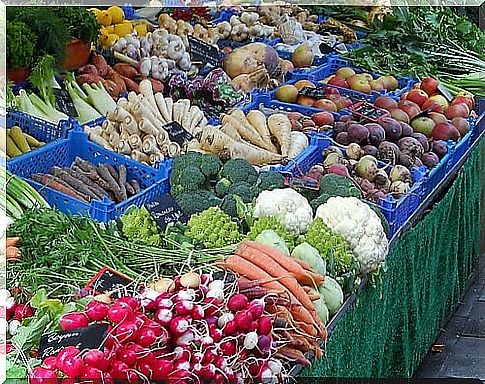
A sample menu of the diet of colors
Next, we show you as an example a possible menu of this healthy diet:
- For breakfast: orange juice and milk with cereals
- Mid-morning: 3 plums
- For lunch: chicken with rice, plus lettuce and tomato salad
- As an afternoon snack: milk shake with papaya
- And finally, at dinner: fish with a salad of aubergines, carrots, garlic and tomatoes
Remember that you can combine these foods as you prefer. Of course, do not forget that these are the foods that should occupy most of the plate.
